Kia continues to roll out new EV models that the Korean brand hopes will help it counter moves by market leaders Tesla, as well as fast-growing Chinese brands like BYD and Geely. But whether it can keep its strong momentum going in the U.S. as Pres. Donald Trump enacts new anti-EV policies remains to be seen.
Kia pulled the wraps off three new battery-electric vehicles during a media event in Tarragona, Spain, products meant to anchor its push to become a full-line manufacturer in the mainstream EV market.
The automaker had given insight into two models earlier this week, including the compact EV4 and PV5 van. During the annual Kia EV Day, CEO Ho Sung Song added to the list with the debut of the smaller EV2 crossover.
Kia is determined to position itself as a major player in the electric vehicle market, challenging Tesla as it shows signs of faltering, as well as upstart Chinese manufacturers, like Geely and BYD. Kia has already made significant gains in the U.S., posting an 87% sales surge last year. But, like the rest of the industry, what happens next could depend on Pres. Donald Trump who is amping up his tariff campaign with, among other things, new duties on imported steel and aluminum. Trump has also promised to eliminate federal tax credits for EV buyers.
Product blitz
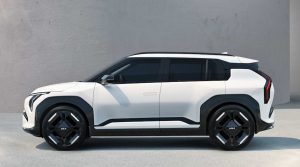
Kia has quickly expanded its battery-electric line-up with products like the EV3 recently introduced in China.
Kia already offers three all-electric models in the U.S. market, the battery-only EV6 crossover and three-row EV9, as well as an all-electric version of the quirky little Soul. It also has just launched the compact EV3 crossover in South Korea and Europe, while the midsize EV5 crossover is focused on China, though it has been added to the line-up in some other global markets.
Now, three more products are coming:
- The EV2 will serve as the base model in Kia’s all-electric family, expected to start at the equivalent of just over $30,000;
- The EV4 is a somewhat larger and better-equipped model, though it slots below the EV6 currently available in the U.S. Pricing will start under $40,000;
- PV5 is the production version of the flexible van concept first shown at the 2024 Consumer Electronics Show. Both commercial and passenger versions are in the works. Pricing should come in around $37,000.
What we know about EV2
The subcompact EV2 will first be offered in Europe and some other regions of the world in 2026.
The model displayed at Kia EV Day was officially billed as the Concept EV2, but is expected to reemerge in production form with relatively few changes – as was the case with earlier “concepts,” like the EV3. Among the things to watch: whether the final version will retain the rear-hinged back doors, as well as the massive tailgate, of the concept. There’s also no center, or B, pillar, though that may need to be added to meet crash standards.
The interior is designed to be extremely flexible for cargo and passengers, among other things, adding fold-away second-row seats.
There will be two battery packs, including a limited, 190-mile range option using what appears to be LFP technology, as well as a 280-mile lithium-ion pack. Those figures are based on European WLTP standards and would all but certainly shrink when retested by the EPA. The electrical system will permit vehicle-to-load, or V2L, functionality, allowing owners to power a campsite or worksite, for example. Removable Bluetooth speakers will help create a party scene when parked.
More Kia News
- Here’s More on the Kia EV4
- And More on the Kia PV5
- Kia Looks at Pickup, Other “White Space” Opportunities
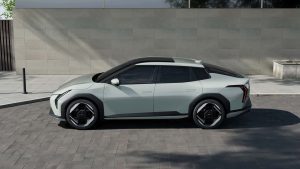
The Kia EV4 will be offered in hatchback and sedan versions, though only the 4-door will reach the U.S.
EV4 and PV5
We got a first look at the other new models earlier this week.
The PV5 brings to market the flexible van concept Kia first showed 13 months ago at CES 2024. The production version will, as promised, be offered in both commercial cargo and people-mover forms. As Carl Malek noted earlier this week: “it maintains the core theme of the concept but with extra black body cladding and chunky side mirrors.”
The name is shorthand for “Platform Beyond Vehicle,” and uses a ground-up, EV-only platform that, Headlight.News reported will eventually underpin other EVs as Kia attempts to create a mobility-focused lineup of battery-electric vehicles. That eventually could include a pickup truck version which also was teased at CES.
As for EV4, we first saw this concept at the New York Auto Show a couple years ago. Again, the concept design has largely carried over into the production version – though it gets more conventional mirrors and door handles. Built on the same E-GMP platform as the Kia EV6 and EV9 models – and Hyundai offerings like Ioniq 5 – two battery packs will be offered, including one delivering up to 391 miles per charge. But expect something more like 300 miles in the U.S.
In current configuration, EV4 relies on a single, front-mounted electric motor mustering 201 horsepower – enough to hit 60 in 7.4 seconds. Whether that drivetrain layout will be used in the U.S. is yet to be confirmed. But Kia did note that only a Forte-sized sedan will be coming to the U.S. Other markets also will have a hatchback EV4 option.
Trump policies could force Kia to revise U.S. plans
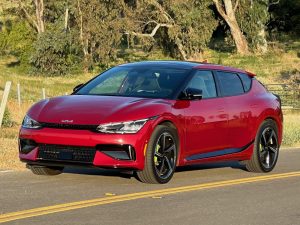
The EV6 is one of the reasons Kia sales surged 87% in the U.S. last year – but Trump could short-circuit the EV market going forward,
Kia would like to bring the new EVs – at least the EV2 and EV4 – to the U.S. but plans have not been locked down and could depend upon what happens to the EV market now that Trump is in office.
The new president has staked out a largely anti-EV stance. He has already enacted new tariffs on Chinese goods, as well as imported aluminum and steel. He is promising to add tariffs targeting major trade partners including Canada and Mexico and may also levy new duties on automobiles imported from other parts of the world. At home, he’s trying to kill a program Congress passed to fund a nationwide rollout of public EV chargers and is threatening to kill the $7,500 tax credits for EV buyers.
EV2 is aimed at the entry-level buyers currently priced out of the EV market – Cox Automotive estimating the average transaction price on U.S. battery-cars last month topping $55,000. But the new Trump policies could add to the planned price of EV2, making it far less affordable in the States. And with an already low profit margin that may destroy Kia’s business model.
Trump’s policies could also make it more difficult to justify the slightly more expensive EV4, as well, several analysts told Headlight.News.

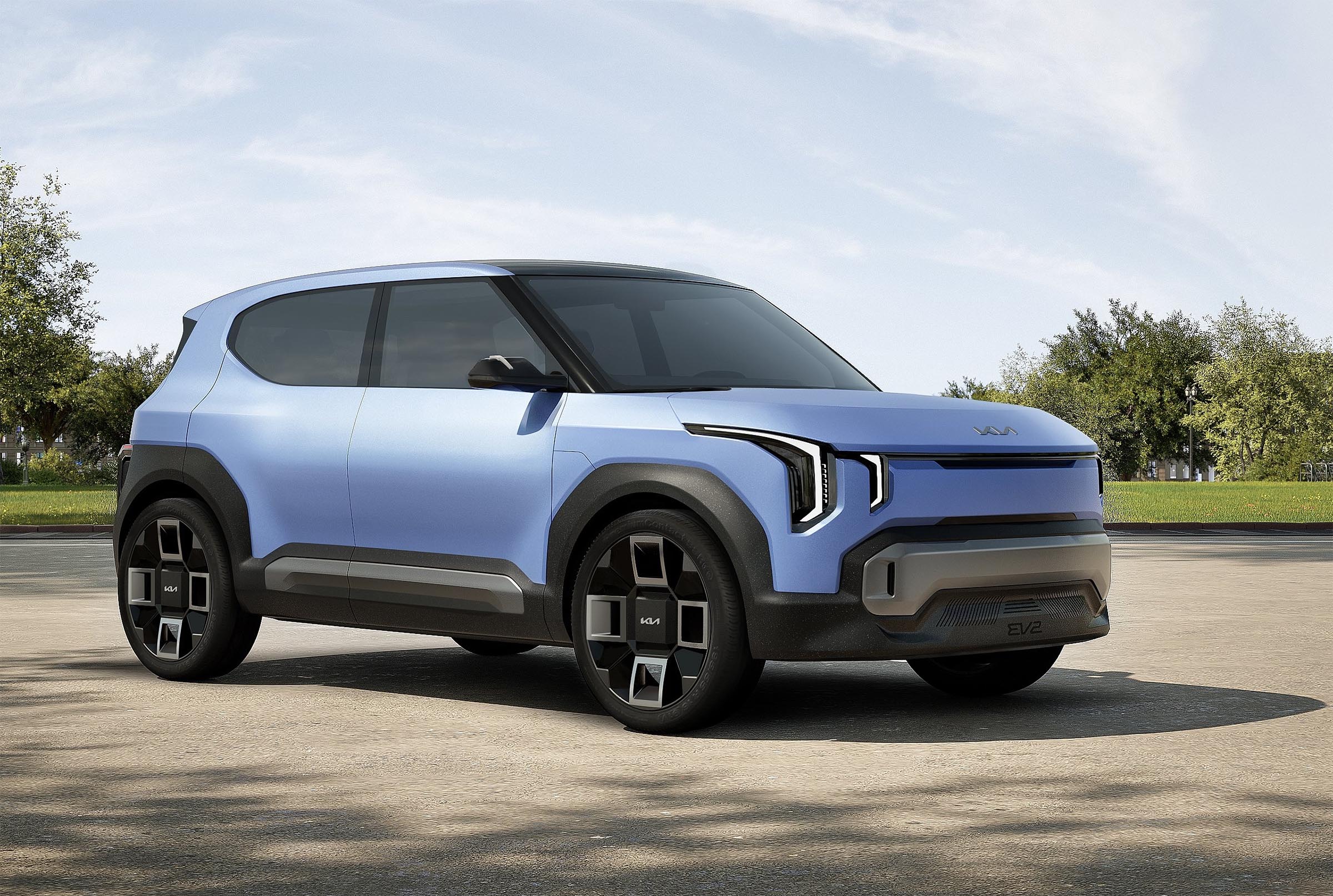
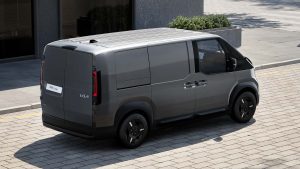
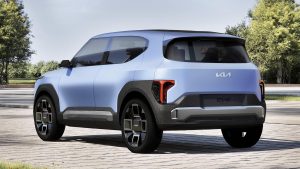
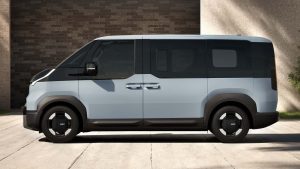

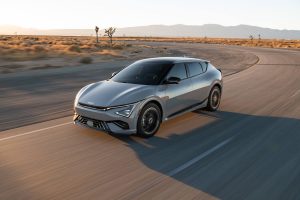
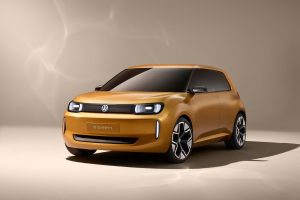
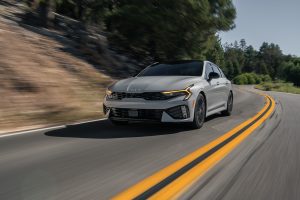

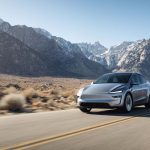
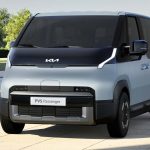
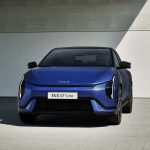
“…Pres. Donald Trump enacts new anti-EV policies remains to be seen.”
Eliminating government payments to purchase an EV IS NOT enacting anti EV policy.
It’s leveling the playing field. Nothing Trump did restricts you from buying what you want.
Why should MY tax dollars pay for YOUR car.
Common sense is not so common (certainly at Headlight News)!
Apparently, comprehension is not your strong point, Jim. A quick search shows that the oil industry is getting tens of billions of OUR tax dollars annually. That’s direct funding. There’s billions more in indirect funding, including military protection of oil shipping lanes which would be less necessary to protect if we didn’t guzzle so much oil.
There’s plenty of money going into other transportation-related projects (non-EV), but I don’t hear you worrying about them using tax dollars. FYI, the U.S. (like most major countries) has invested heavily in transportation, especially the next-generation technologies, since helping fund some of the earliest roads, steamships, canals, rail lines, air travel, space, etc. The largest landholders in the country, other than the feds, are railroads…notably Union Pacific. They got the equivalent in today’s dollars of hundreds of billions of dollars in subsidies, much of that in terms of land.
To help you put things into perspective:
https://www.climatescorecard.org/2023/05/the-us-recently-has-been-averaging-20-billion-in-oil-company-subsidies/
https://worldpopulationreview.com/country-rankings/fossil-fuel-subsidies-by-country
https://www.eesi.org/papers/view/fact-sheet-fossil-fuel-subsidies-a-closer-look-at-tax-breaks-and-societal-costs
https://www.imf.org/en/Blogs/Articles/2023/08/24/fossil-fuel-subsidies-surged-to-record-7-trillion
https://e360.yale.edu/digest/fossil-fuels-received-5-9-trillion-in-subsidies-in-2020-report-finds
Oh, and it’s hard to argue that reversing Congress’s approval of EV charger funding isn’t anti-EV, nor shutting off 8,000+ chargers already installed at government locations.
And then there’s intentional parking the tens of thousands of EVs now in GSA fleets. If they are parked and replaced that’s actually a huge burden to taxpayers. If they are sold off early in their lifecycle, that’s also an unnecessary hit to taxpayers. (Would be if they were gas models sold off early.)
And note there is absolutely NO argument that operating costs for fleet vehicles is substantially lower than for gas vehicles.